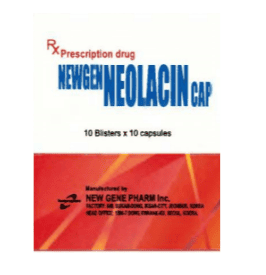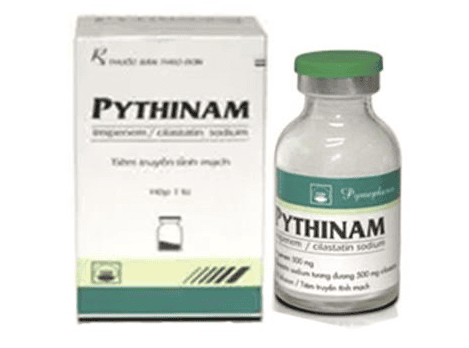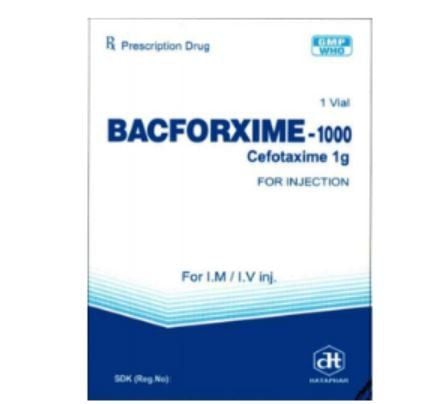This is an automatically translated article.
What is Alfazole? Look up information about Alfazole such as: uses, dosage, notes when using, side effects.... in the article below of Vinmec.
1. General information about Alfazole
Alfazole belongs to the group of drugs used to treat parasites, has anti-fungal, anti-viral and anti-bacterial effects. The drug has the main ingredient is Cefazolin in the form of Cefazolin Sodium with a content of 1g. Alfazole is prepared in the form of powder for injection, the form of packing box of 10 vials x1g. The unit responsible for producing Alfazole is Schnell Biopharmaceuticals, Inc. - Korea.
2. What are the effects of Alfazole?
Alfazole is usually indicated for use in cases such as:
Infections of the bronchi, otolaryngology, lungs, genitourinary tract; Blood infection ; Endocarditis ; Infections of the serosa, teeth, bones, joints, skin; Indications for treatment in some cases of bacteremia and endocarditis; Indicated for the treatment of some infections of the urogenital tract and biliary tract. Alfazole is also indicated for prophylaxis in surgery. Because it can reduce the rate of postoperative infection in patients undergoing surgery with a high risk of infection, or surgery where a particularly serious postoperative infection is likely to occur.
Do not use the drug for people with hypersensitivity reactions to cephalosporins or local anesthetics.
3. Recommended Dosage and Administration of Alfazole
Alfazole is used by slow injection into a vein about 3-5 minutes, deep intramuscular injection, intravenous infusion.
Dosage for adults: 0.5 - 1 g each time, 6 - 12 hours apart, the usual maximum dose is 6g/day. In some cases of severe infections with a risk of death, up to 12g/day was used. Dose for infants under 1 month of age: 20mg/weight each time, doses 8-12 hours apart. Currently, the safety of the drug in premature infants under 1 month of age has not been studied, so its use is not recommended in this case. Dose for infants over 1 month old: 25-50 mg/weight each time, divided into 3-4 times/day. In severe infections, the dose can be increased to a maximum of 100 mg/body weight/day, divided into 4 times/day. In case of infection prevention in surgery: 1g injection dose before surgery about half an hour to 1 hour. If the surgery is prolonged, the next dose of 0.5 - 1g can be injected. The postoperative dose is 0.5 - 1g, 6 - 8 hours apart per day or for 5 days in some cases such as orthopedic transplants and open heart surgery. Note the dose reduction for people with impaired renal function, the dose reduction will depend on the doctor's instructions for each case. The way to mix the solution for injection depends on the size of the vial, the 1g vial should only be diluted with distilled water for injection. Be sure to shake the injection well when it is mixed with the solvent.
Intravenous and intramuscular injection: mix according to the instructions of the dilution table in the drug's instructions. Intermittent or continuous intravenous infusion: further dilute the reconstituted cefazolin with 50-100 ml of one of the compatible solvents listed in the drug's instructions.
4. Side effects of Alfazole
The exact incidence of allergy to cefazolin is unknown in patients who are not allergic to penicillin. There are recommendations for cases of toxic epidermal necrolysis and many for the development of a systemic pustular rash caused by cefazolin. There is a 1 to 2% confirmed incidence of clinical cross-allergy between penicillins and cephalosporins. Nevertheless, it is best to avoid cephalosporins in the event of a history of penicillin- or IgE-mediated anaphylaxis. Most cephalosporins carry a risk of reactions ranging from neutropenia to agranulocytosis. These cases all occurred due to high cumulative dose in one course of treatment, often seen immunohemolytic anemia during treatment with very high doses. Cefazolin interferes with the synthesis of vitamin K-dependent clotting factors, so it is important to monitor bleeding time in patients at risk such as thrombocytopenia, bleeding history, use of drugs that affect platelet function. People treated with cefazolin may be at increased risk of bleeding with liver dysfunction, renal failure, a history of gastrointestinal disease, and nutritional deficiencies. There have been reports of neurotoxicity with cefazolin following intraventricular and systemic administration. When tested in animals, cefazolin was the second cephalosporin to cause nephrotoxicity and damage similar to cephaloridine, however, there is no specific evidence in humans.
5. Precautions when using Alfazole
Before using Alfazole, it is necessary to inform the doctor or pharmacist in charge of a history of allergy to penicillins, cephalosporins and other drugs (if any). The drug will react if used with: Probenecid, warfarin, alcohol. There have been cases of partial cross-allergy between cephalosporins and penicillins. In addition, severe anaphylaxis has occurred with both drugs; therefore, it is recommended that cephalosporins be avoided in patients with previous penicillin or IgE-mediated anaphylaxis. It is necessary to stop using the drug and take the patient to a medical facility to be treated with some commonly used drugs such as vasoconstrictor amines, adrenaline, corticosteroids and antihistamines if hypersensitivity reactions occur. Caution should be exercised when prescribing broad-spectrum antibiotics to people with a history of colitis or gastroenteritis. Non-susceptible organisms may overgrow with prolonged use of cefazolin. Pay attention to monitor patients during drug administration, if superinfection occurs, appropriate measures should be taken.
Please dial HOTLINE for more information or register for an appointment HERE. Download MyVinmec app to make appointments faster and to manage your bookings easily.













